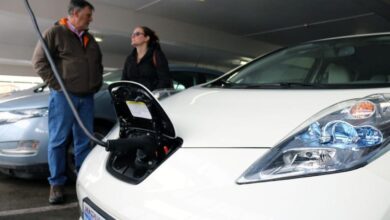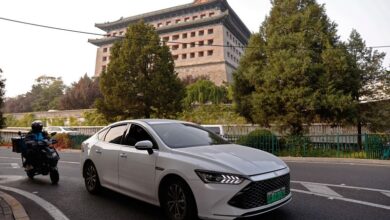The $36K Chevy Equinox EV Is The Best Electric Car For Most People
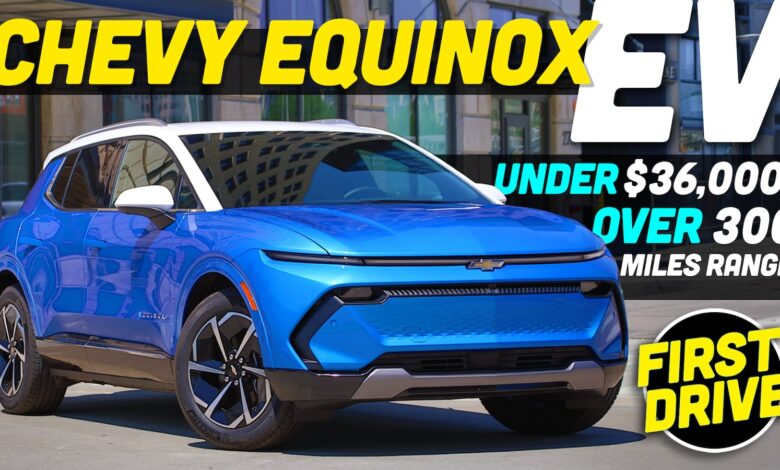
By combining Chevrolet’s best-selling non-truck nameplate with its EV platform in a compact crossover platform at a comparatively affordable price of around $36,000 (after tax credits and $28,000 for a cheaper version due later this year), GM clearly hopes the Equinox EV will be a winner in the marketplace. Now that we’ve driven it, we have opinions on whether or not the company has managed to find a car right in the Goldilocks Zone of price, range, and usability.
“Compact” crossover utility vehicles now comprise about one-quarter of all new vehicle sales in the US market having overtaken the midsize sedan several years ago. Full-size pickups like the Ford F-series, Chevrolet Silverado and Ram are still the top-selling nameplates, but there are far fewer players in that segment.
![]()
When you add up everything from the Toyota Rav4 to Volkswagen ID.4, the total volume is easily double the big pickups. That’s why the 2024 Chevrolet Equinox EV is such an important vehicle for General Motors.
How Does It Look?
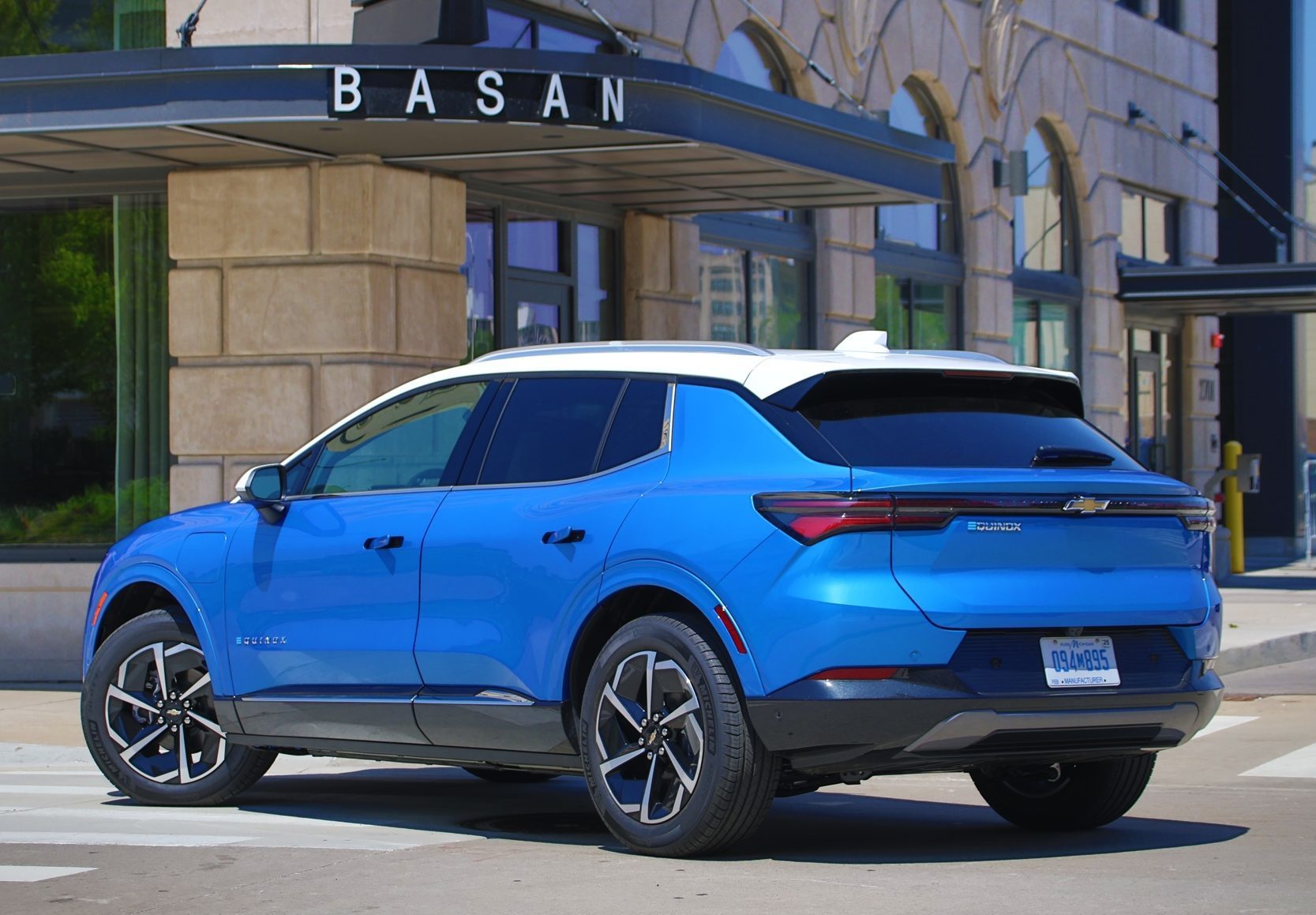
There was a period within my lifetime when vehicles that we labeled as compacts were actually small. Unfortunately, marketers at automakers have concluded that applying misleading labels works to their benefit. Let’s make one thing perfectly clear right at the top: The 2024 Chevrolet Equinox EV is very much a midsize crossover, not a compact, despite how Chevrolet labels it. Not that its size is necessarily a bad thing, but buyers should be aware of what they are getting.

So what are potential Equinox owners getting for their money? An attractively styled crossover that is 7.4-inches longer than the newly redesigned gas-powered 2025 Equinox and just 1.6-inches shorter than the “midsize” Blazer EV. The Equinox EV is 10 inches longer than the best-selling compact utility, the Toyota Rav4, and that many inches longer than VW’s electric ID.4. Even compared to the three-row Toyota Grand Highlander, the Equinox is just 4.3-inches shorter. The electric Equinox is also 2.0 inches wider than its gasoline-fueled namesake and has an 8.8-inch greater span between the axles.
| Vehicle | length (in) | wheelbase (in) | width (in) | height (in) | curb weight (lbs) | pass volume (cu ft) | cargo volume (behind 2nd row) (cu ft) | cargo volume (Max) (cu ft) | Range (miles) | Base MSRP |
| Chevrolet Equinox EV FWD | 190.6 | 116.3 | 76.9 | 64.8 | 4895 | 102.4 | 26.4 | 57.2 | 319 | $43,295 |
| Chevrolet Equinox EV AWD | 190.6 | 116.3 | 76.9 | 64.8 | 5050 | 102.4 | 26.4 | 57.2 | 285 | $46,595 |
| Chevrolet Blazer EV | 192.2 | 121.8 | 78 | 65 | 5591 | 96.3 | 25.5 | 59.1 | 324 | $58,790 |
| Chevrolet Equinox ICE | 183.2 | 107.5 | 74.9 | 65.6 | 3428 | 104.3 | 29.8 | 63.5 | $31,080 | |
| Hyundai Ioniq 5 ER | 182.5 | 118.1 | 74.4 | 63 | 4200 | 106.5 | 27.2 | 60.2 | 303 | $47,225 |
| Hyundai Kona EV ER | 171.5 | 104.7 | 71.9 | 62 | 3571 | 101 | 26 | 64.7 | 261 | $38,050 |
| Kia EV6 ER | 184.3 | 114.2 | 74 | 60.8 | 4255 | 103 | 24.4 | 50.2 | 310 | $47,325 |
| Mustang Mach-E ER | 185.6 | 117.5 | 74.1 | 64 | 4633 | 104.5 | 29.7 | 59.7 | 320 | $48,890 |
| Tesla Model Y LR RWD | 187 | 113.8 | 75.6 | 64 | 4213 | 106 | 30.2 | 76 | 320 | $44,990 |
| Toyota bZ4X | 184.6 | 112.2 | 73.2 | 65 | 4266 | 94.4 | 27.7 | 56.1 | 252 | $44,420 |
| VW ID4 ER | 180.5 | 108.9 | 72.9 | 65.2 | 4694 | 100 | 30.3 | 64.2 | 291 | $46,300 |
The upside of all this is that the Equinox EV is exceptionally roomy inside. Even with the driver’s seat set for my 5-foot-10-inch frame, I had several inches of knee clearance in the back seat along with plenty of headroom. Compared to the gas version the EV certainly feels like it’s a class larger from the perspective of a passenger.

While the Blazer and Equinox are nearly the same length, the Blazer has an extra 5.5-inches of wheelbase which allows for even more backseat space. Unless you’re chauffeuring NBA prospects, most will find the Equinox more than satisfactory.
The Equinox’s cargo hauling capacity is also more than adequate for most needs, although not class-leading. The 26.4 cubic feet behind the rear seats is 3.4 cubic feet less than the gas model and lags behind the Hyundai Ioniq 5, Mustang Mach-E, Model Y, Toyota bZ4X and VW ID.4, all of which have a smaller footprint. As expected in any crossover or hatchback, there is a 60/40 split folding rear seat that can expand cargo volume to 57.2 cubic. At our lunch stop, Chevrolet demonstrated the capacity of the Equinox with an example that was loaded with two full sets of hockey gear.

As another point of comparison, the Hyundai Kona Electric is an even more compact electric crossover that is 19.1-inches shorter than the Chevrolet, yet it provides just 1.4 cubic feet less passenger space and 0.4 cubic feet less behind the seats while max cargo volume is an impressive 64.7 cubic feet, 7.4 more than the Equinox. The TLDR is that the Equinox EV is not a leader in packaging efficiency.
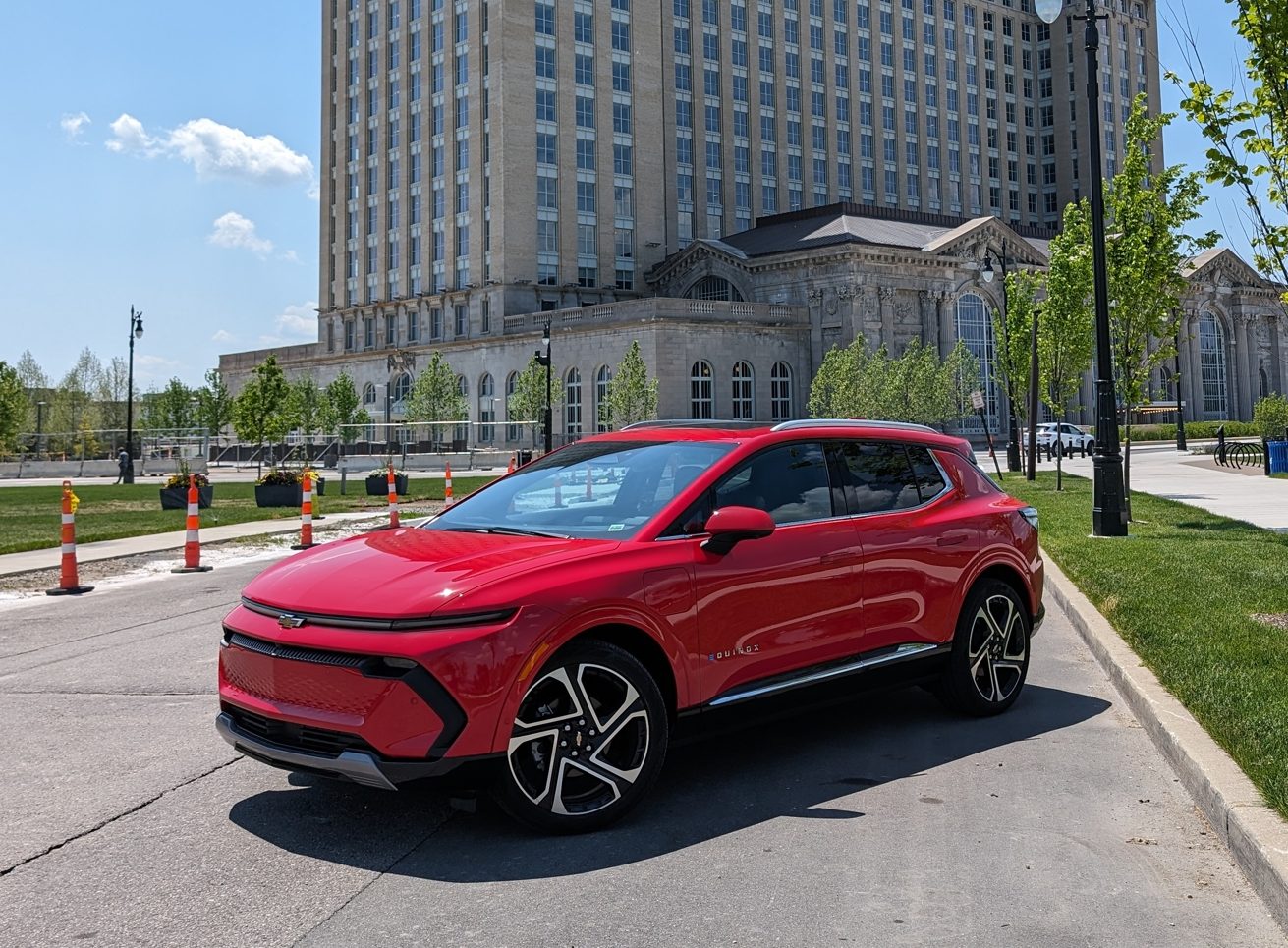
Despite its surprisingly similar dimensions to the Blazer, the Equinox does look smaller to the eye. Where the Blazer has a more chunky, muscular visual demeanor, the Equinox is cleaner and sleeker. Chevrolet designers have regularly discussed the spectrum of their brand design language of late. This stretches from strength to velocity. At the strength end of that spectrum is the look applied to trucks and more rugged SUVs with a more upright fascia, with the most notable difference being the more squarish wheel arches. These have been a signature of Chevrolet trucks for decades.
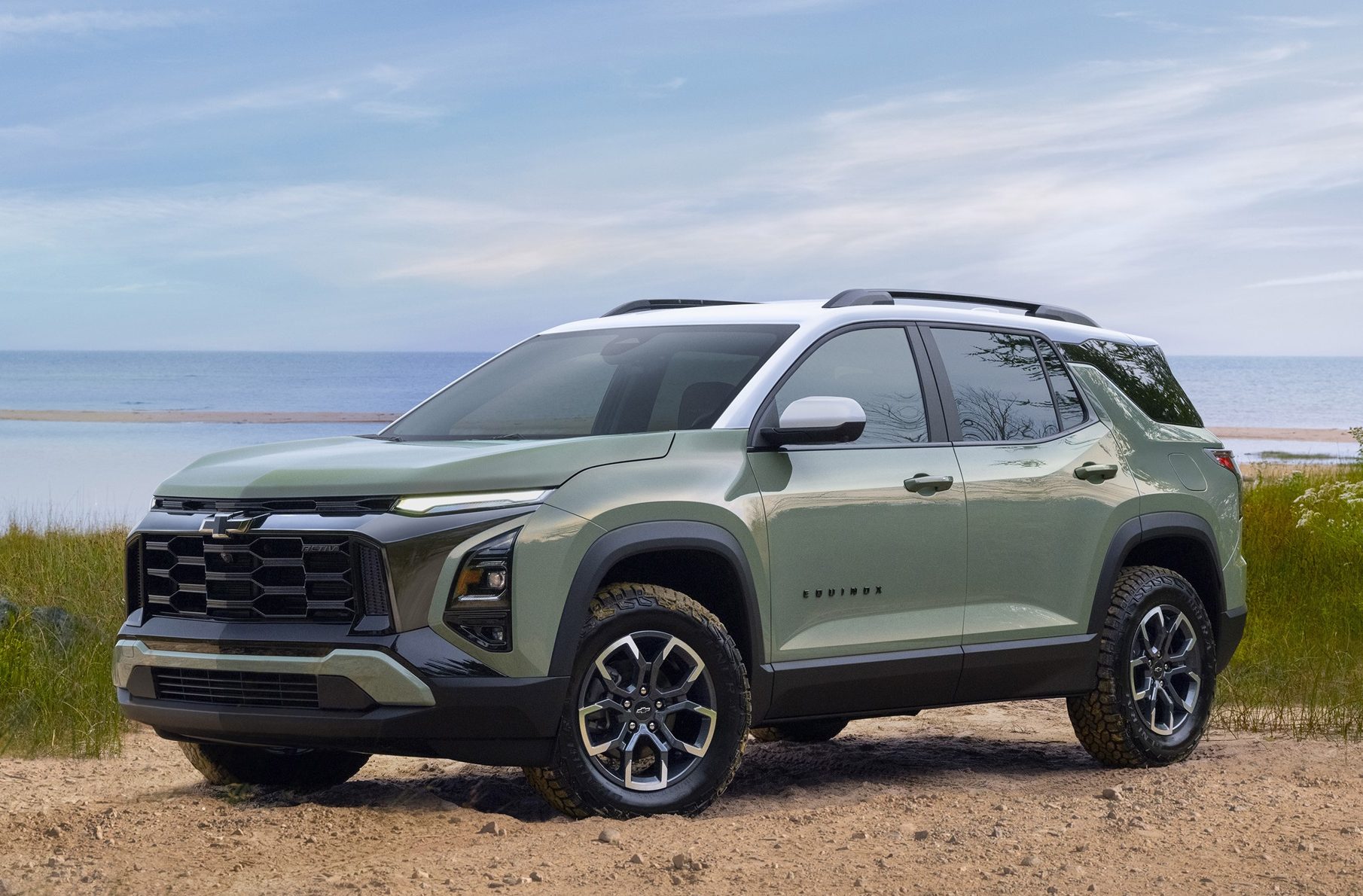
The new gas Equinox has shifted in the direction of strength, adopting a more off-roady look. The EV on the other hand has gone for the velocity look like the Blazer and Corvette with round wheel arches. The Corvette is the most extreme example followed by the Blazer (now that the Camaro is defunct). The extra length of the Equinox EV gives it a slightly more wagonish stance than the more upright gas model and is, to my eye, one of the best-looking GM vehicles in some time.
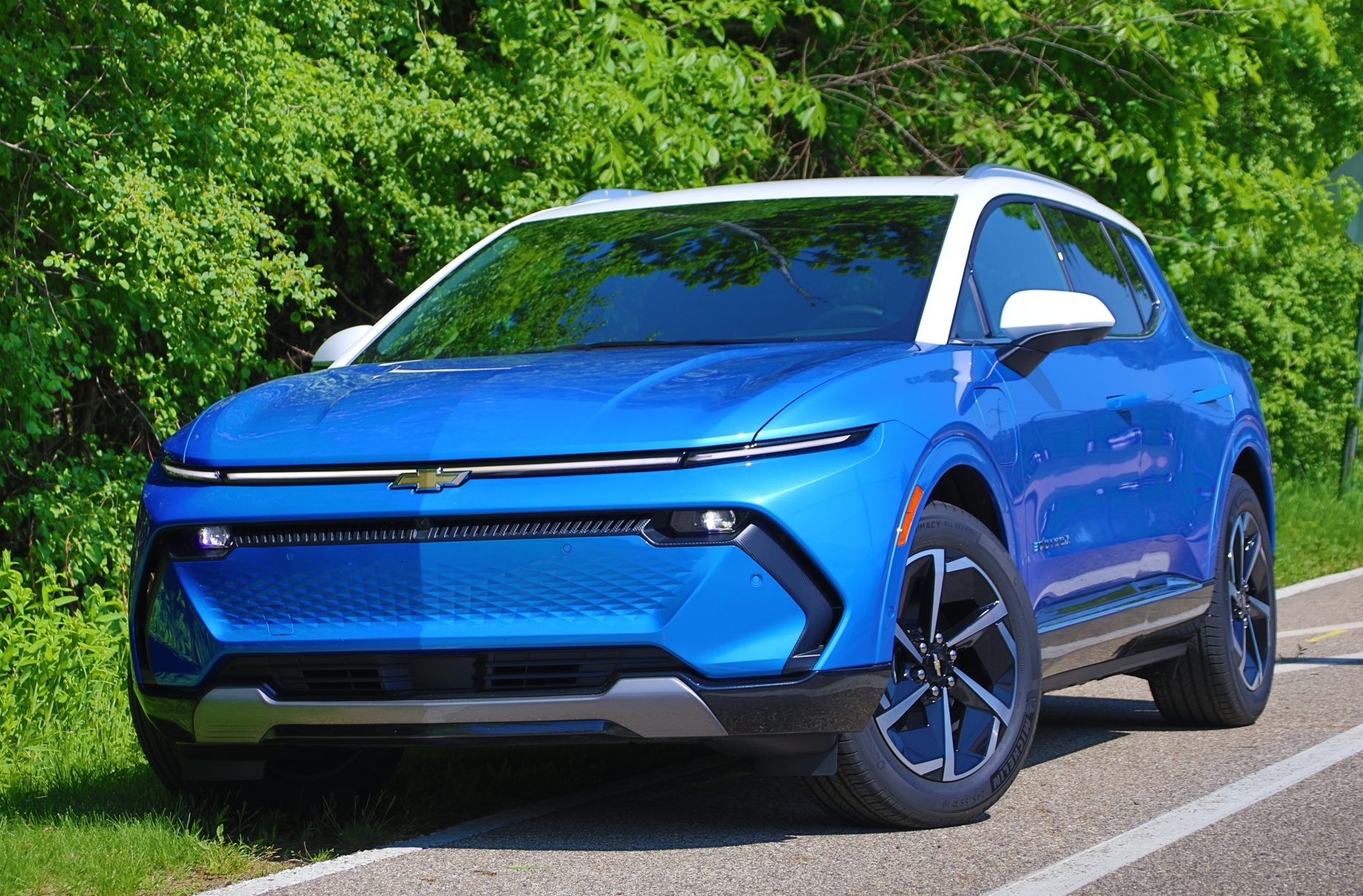
Like many modern EVs including others from Chevrolet, there is a slim daytime running light bar that spans the entire upper portion of the fascia. Below a body-colored strip are the compact LED headlamps and then a diamond-textured section also in body color. The Equinox lacks the faux fender vents of the Blazer and frankly that’s an improvement. So are the body-colored wheel arches in place of the matte black of the Blazer.
Several of the color combinations are offered with a two-tone paint scheme with LT trims offering a white roof along the riptide blue metallic while RS models get a black roof option. The white-on-blue that we drove is my personal favorite but the black roof with radiant red RS is also a nice combination.
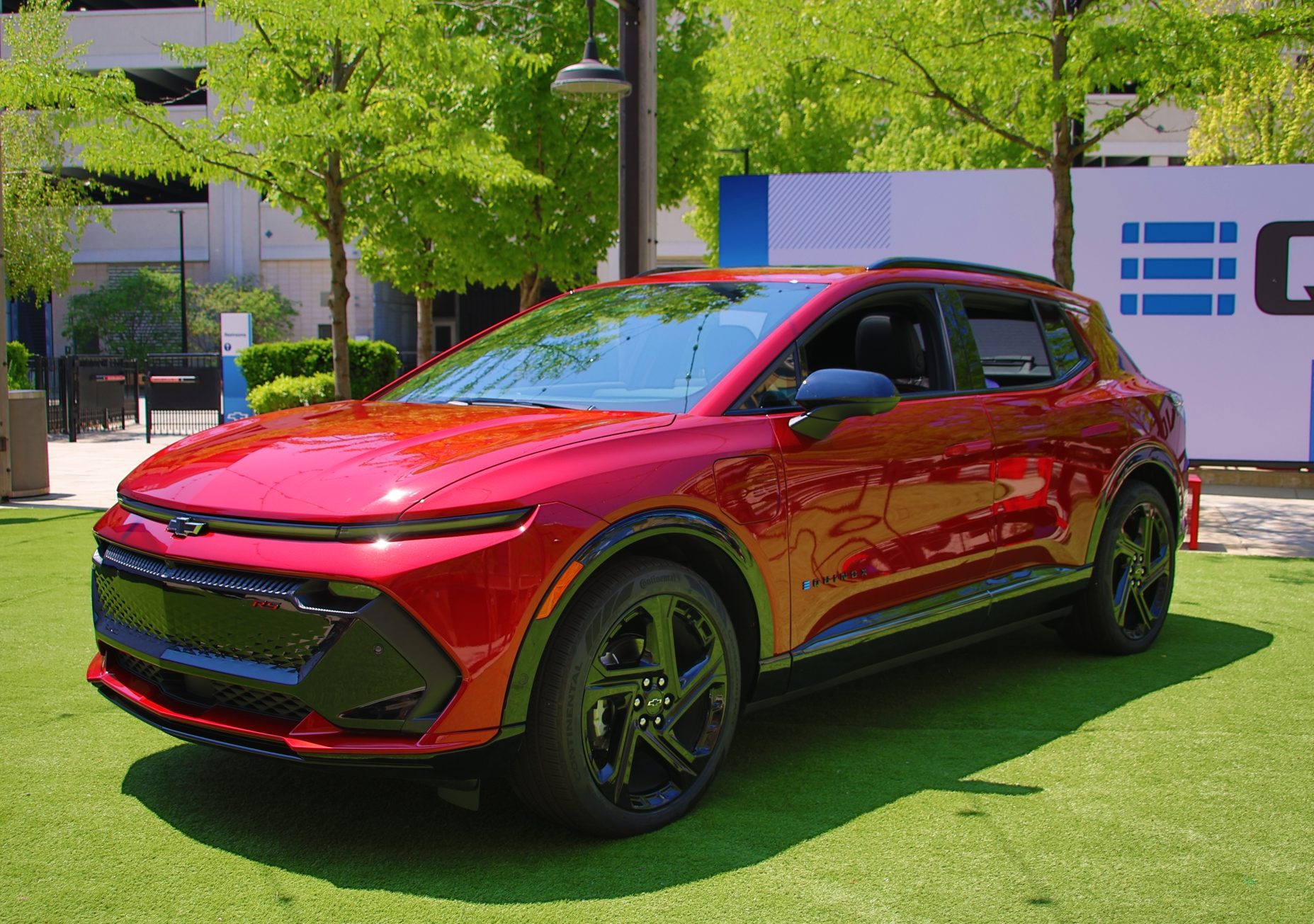
As the Equinox EV goes on sale in the coming weeks, it will only be offered in 2LT, 3LT, 2RS and 3RS trim combinations. Later in the year, 1LT and LS trims will also be added to the lineup. The 2LT rides on 19-inch alloy wheels while the other currently offered variants all roll on 21s with all of them featuring 6-lugs due to the weight of the Equinox EV. We drove a front-wheel-drive 2LT on the 19-inch wheels and they still look well proportioned for this vehicle and it doesn’t look undertired. Those that live in areas like southeast Michigan where pavement quality is best described as inconsistent may want to go with the smaller wheels with taller sidewall tires for a bit of extra cushioning and wheel protection from the potholes.

Let’s Talk Tech
All of the longer wheelbase Ultium-based EVs including the Blazer, Cadillac Lyriq, Honda Prologue and Acura ZDX use a 5-link independent suspension layout front and rear. In order to help it hit a lower price point, Chevrolet has opted for a Macpherson strut front layout on the Equinox while the multi-link setup is retained at the rear.
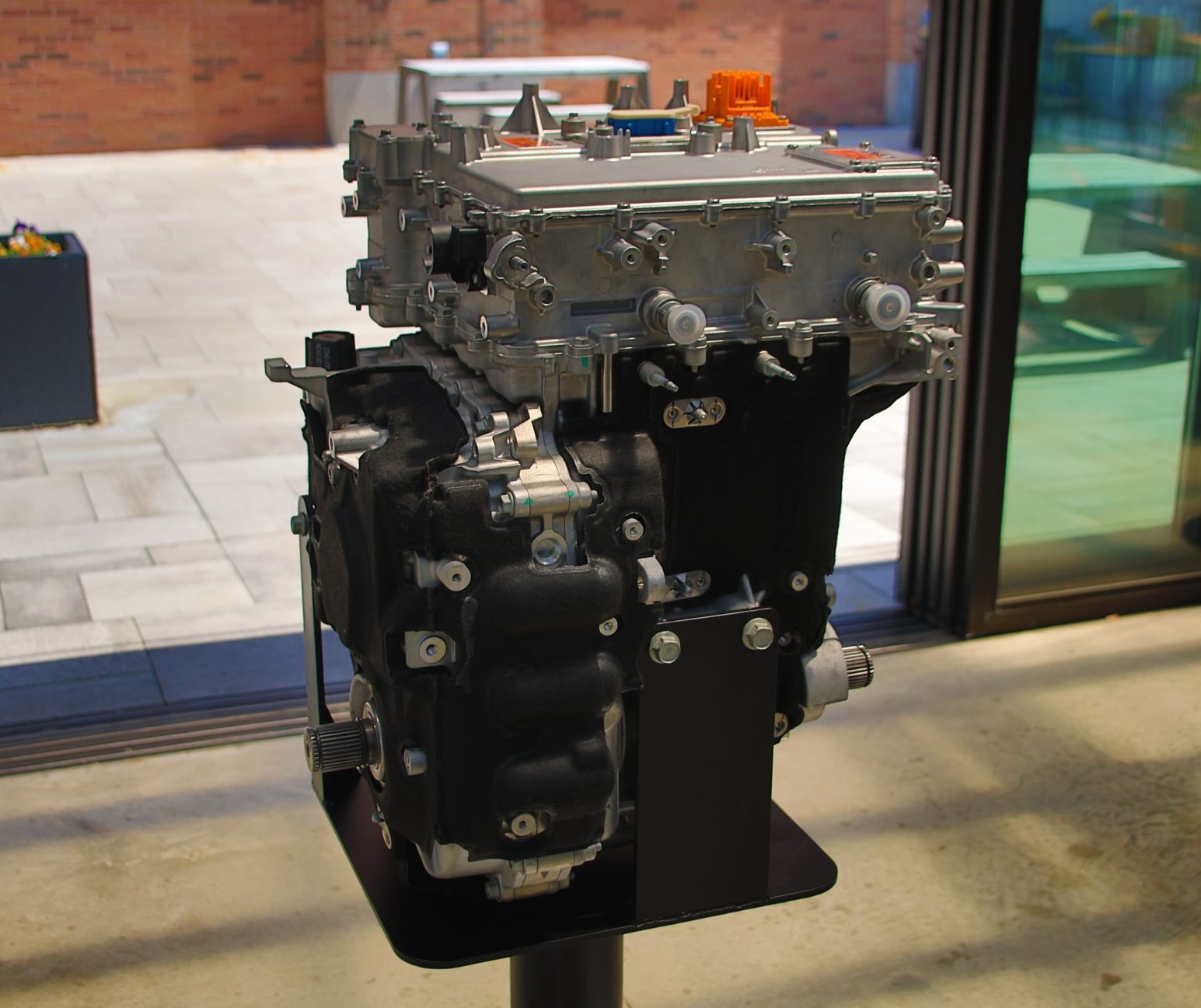
The propulsion and energy storage on the Equinox uses the same component set found on the rest of the Ultium lineup to help achieve economies of scale. The Ultium drive unit family consists of five different motors that can be mixed and matched in various combinations. Four of the motors are permanent magnet (PM) units of varying power levels while the fifth is an AC induction motor. The PM motors are generally more efficient than AC motors, but they also have some inherent drag when coasting. This is fine for regenerative braking, but for light load conditions, when deceleration isn’t desired, the magnets put some load on the drive system that must be countered by feeding in electricity.
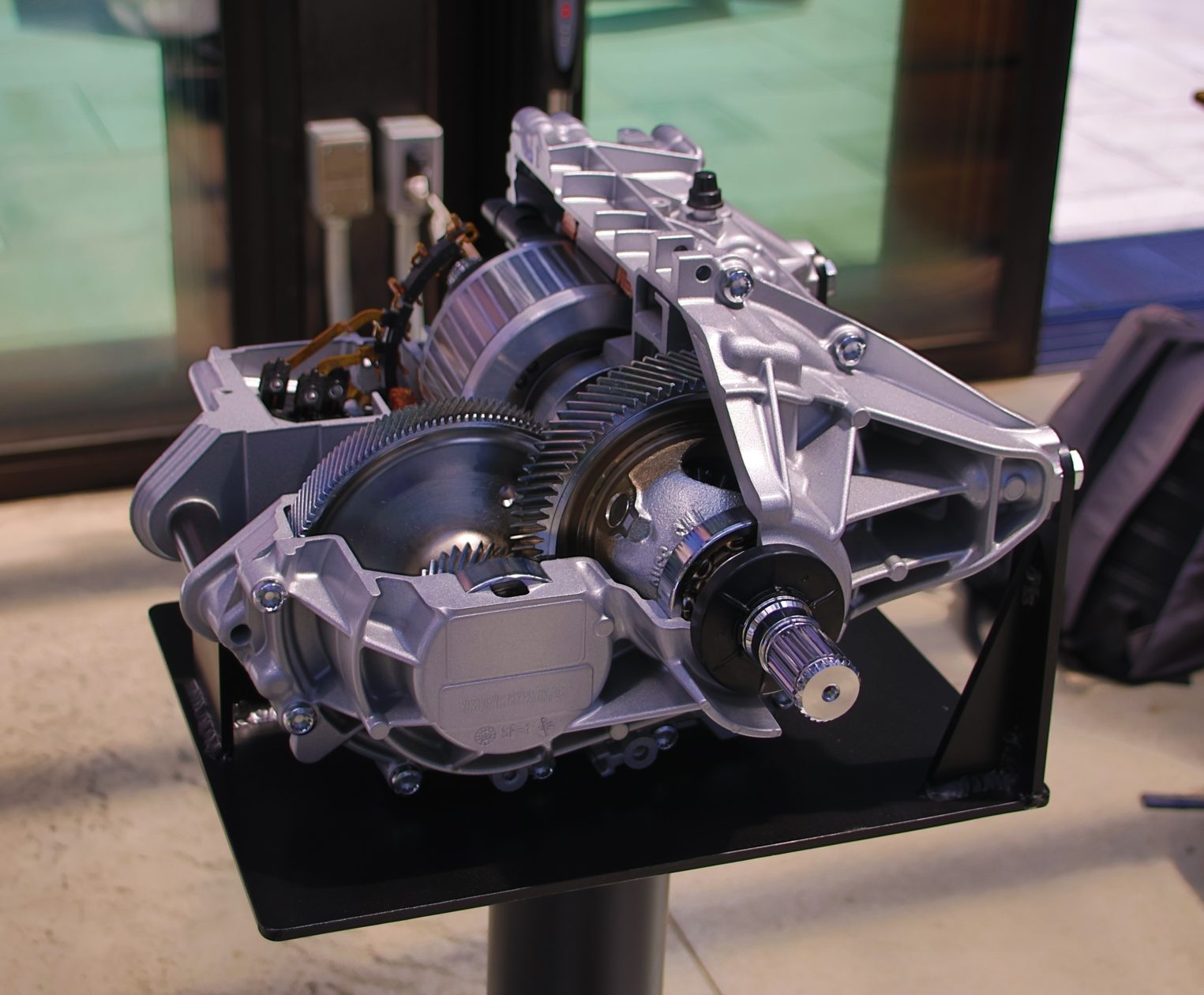
Rivian gets around this by using a dog clutch on its rear motors to decouple them from the wheels when the drive torque isn’t needed, but the clutch adds weight, cost and mechanical complexity. For the electric-all-wheel-drive (eAWD) variants of the Equinox and Blazer, Chevrolet uses one of its PM drive units on the front axle and the AC drive unit to provide on-demand AWD from the rear axle.

All Equinox EVs use a front drive unit with 213-hp and 236 lb-of torque. The rear AC motor ups the total to 288-hp and 333 lb-ft, the same output provided on the eAWD Blazer and Prologue. The result is performance similar to most transverse engine AWD cars and crossovers which are primarily front drive with some percentage of the torque output diverted to the rear wheels when front slip is detected. In this case, the PM motor is always driving the front wheels and AC motor free wheels until needed for the rear axle.
Like the rest of GM’s new EV lineup, the Equinox is somewhat on the porky side with the front drive variant weighing in at 4,895-lbs and the eAWD at 5,050-lbs. For the front-driver, that 213-hp is enough to accelerate to 60 mph in about 8 seconds which means Equinox owners aren’t going to challenge Teslas for pink slips.
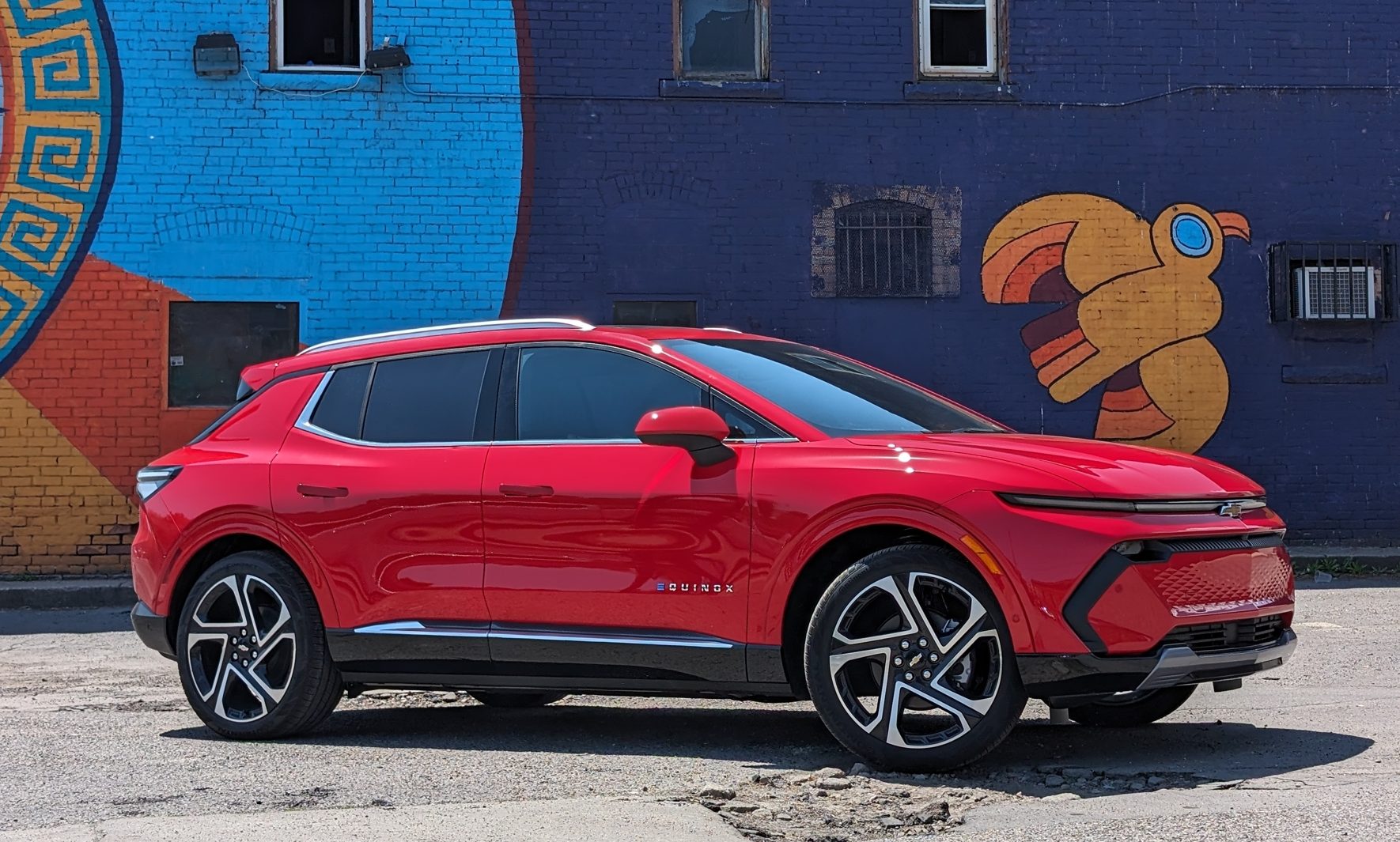
On the other hand, Tesla and the other EV makers that have followed have arguably moved the performance bar too far down the time scale. There’s no reason most people need a mainstream vehicle that can accelerate to 60 mph in 3 seconds or less. Not so long ago, an 8-second 0-60 sprint was actually considered quick and it’s still more than adequate. For those that feel they need the extra tractive capability of all-wheel-drive in poor weather or a bit more acceleration capability at the expense of some range, the eAWD will get to 60 mph in about six seconds.

The shorter wheelbase of the Equinox relative to the Blazer means it can only accommodate a 10-module battery pack rather than the 12-module unit currently used in the longer wheelbase models. That gives the Equinox about 85-kWh of usable energy storage, enough for FWD variants to go about 319-miles on a charge while the slightly heavier eAWD will go about 285 miles. As with the Prologue, which uses the same battery, DC fast charging is limited to 150-kW rather than the 190-kW that is possible with the larger pack. From a low state of charge with the battery temperature preconditioned, the Equinox can add about 77 miles of range in 10 minutes.
At home on a suitable level 2 charger, the Equinox can soak up 11.5-kW of charging power. An upcoming update will also enable vehicle-to-home bidirectional charging capability that enables the vehicle to be used to power a home in the event of a blackout. GM Energy recently launched sales of its vehicle-to-home kits that include a control box, smart transfer switch and inverter to provide up to 9.6-kW of power to the home.

One feature found on many EVs including the Silverado, but absent from the Equinox is a front trunk. Since this is primarily a front-drive vehicle, the engineers stacked the power electronics module on top of the front motor. Along with the heat pump climate control system and assorted other ancillary components, that doesn’t leave much useful space up front.
Let’s Look Inside
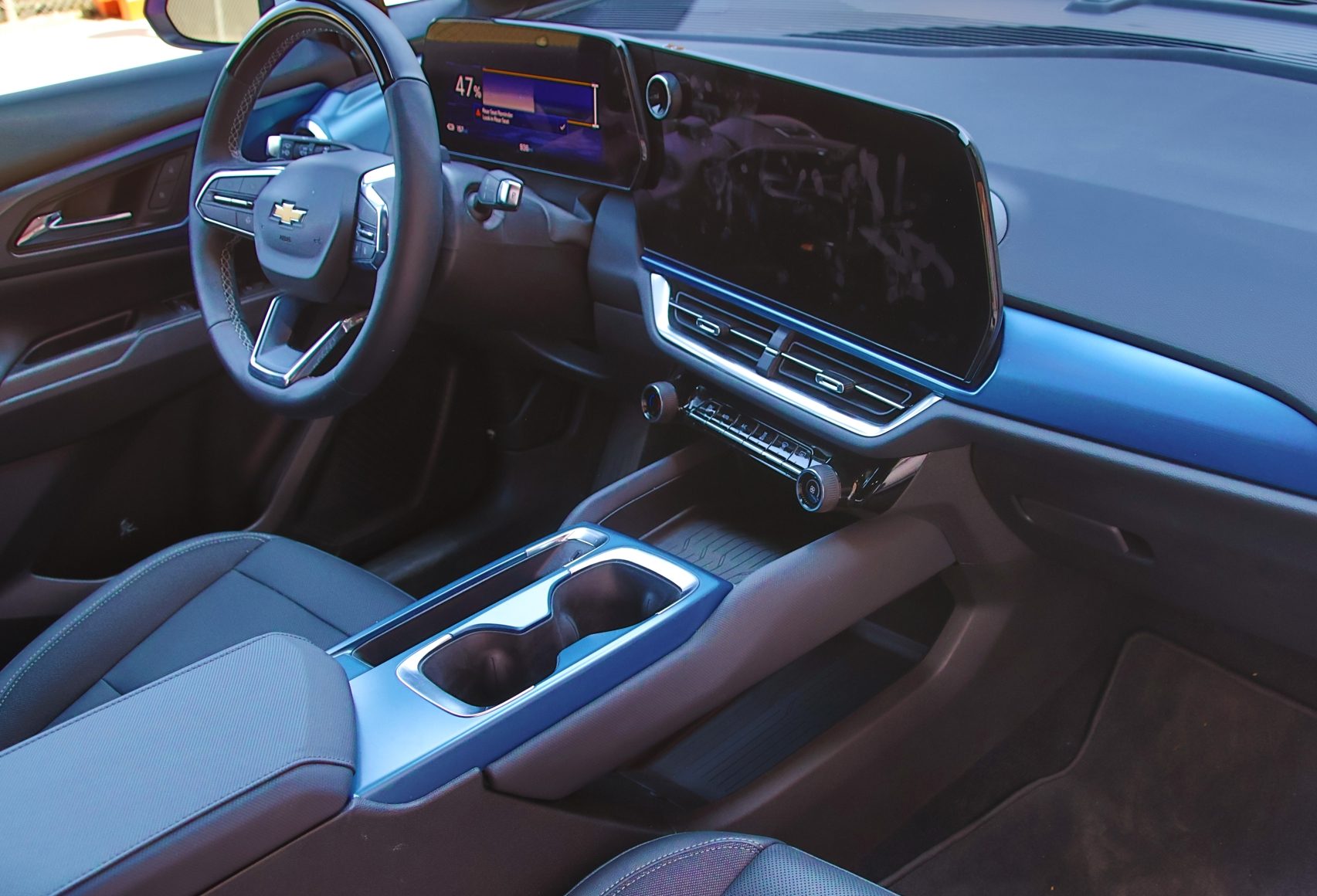
On the other hand, inside the cabin there is plenty of space as previously mentioned along with a wide range of features that would be expected in most modern vehicles. The same combination of 17.7-inch infotainment and 11-inch instrument cluster displays used in the Blazer and Silverado EV RST are standard on all trims of the Equinox. These are excellent displays with high resolution and contrast that are easy to read in all lighting conditions.

They run the same Android Automotive infotainment system with Google Automotive Services as most of the rest of current GM vehicles. That means they have Google Maps and Assistant along with the Play store to download additional apps such as Spotify, PocketCasts and a range of other media streaming apps.
Another thing the Equinox shares with the Silverado and Blazer is the absence of support for smartphone projection like Apple Carplay. The same functionality you can get from Carplay is present and built-in, although you won’t be able to use Apple Maps. Apple Music can be streamed and the system does support Siri pass-through for sending messages or making calls.
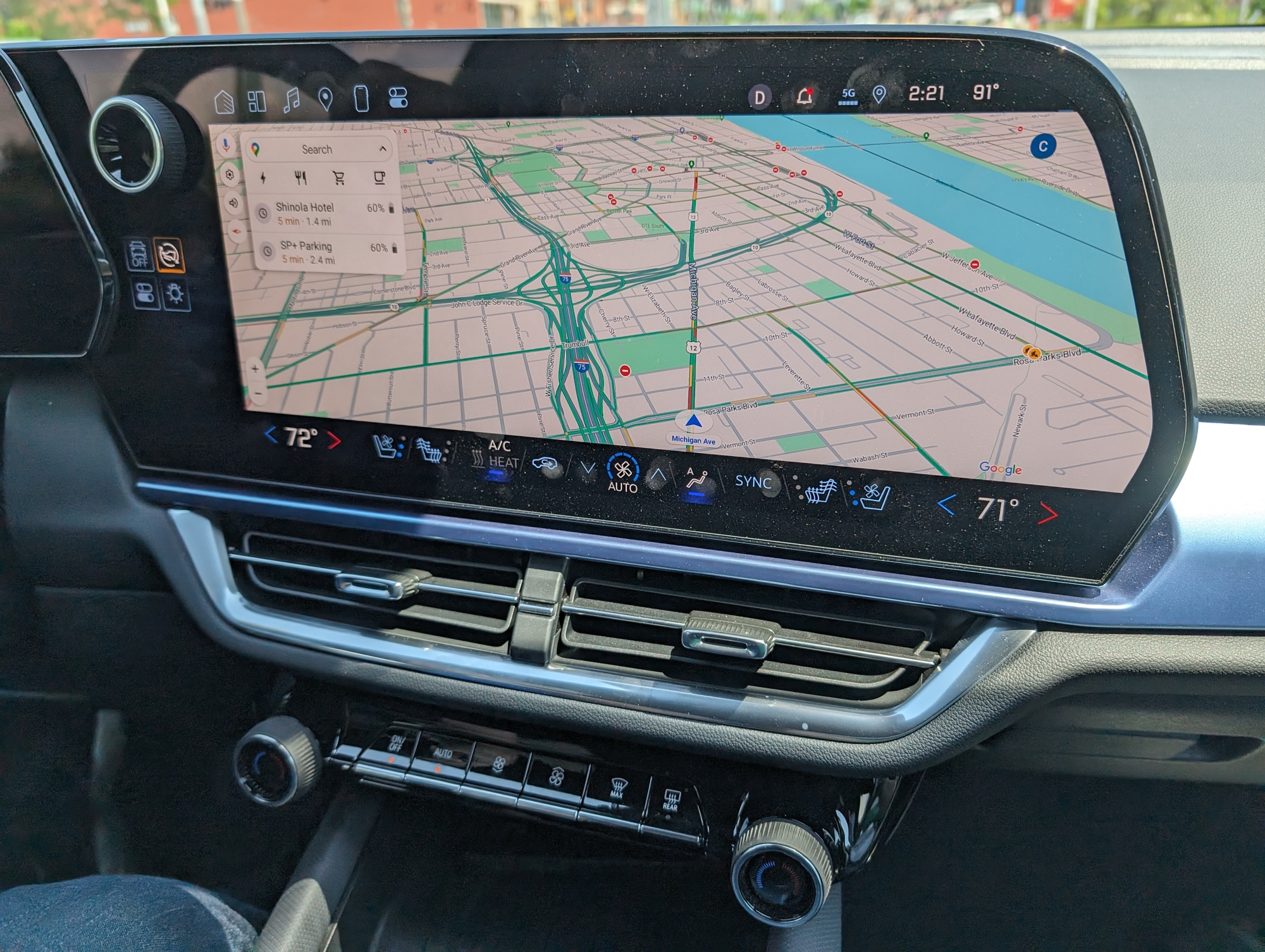
GM is including eight years of complimentary connectivity for Maps and Assistant with the purchase of its EVs and three years of streaming data connectivity. After that, users will need to either subscribe to an OnStar data plan or use their phone as a hotspot and connect the vehicle via wifi. As an Android phone user myself, I’ve never had any issue using this or other similar systems from Volvo, Polestar, Honda, Lincoln and Nissan, but iPhone users might want to make sure they try this out before committing to buying a GM EV. Most users will probably become accustomed to it fairly quickly and not have any issues, but it’s better to know before you sign on for a multi-year car loan or lease.

While smartphone projection is absent, GM is continuing to support physical controls for the most used features like climate control, audio volume and vents. Other automakers like Lincoln, Rivian and Fisker are following the unfortunate trend started by Tesla of electro-mechanical vent adjustments managed through the touchscreen. This is one of the worst interface concepts devised in recent decades. In the Equinox, drivers and passengers can just reach out grab a little tab to point the vent wherever they want.
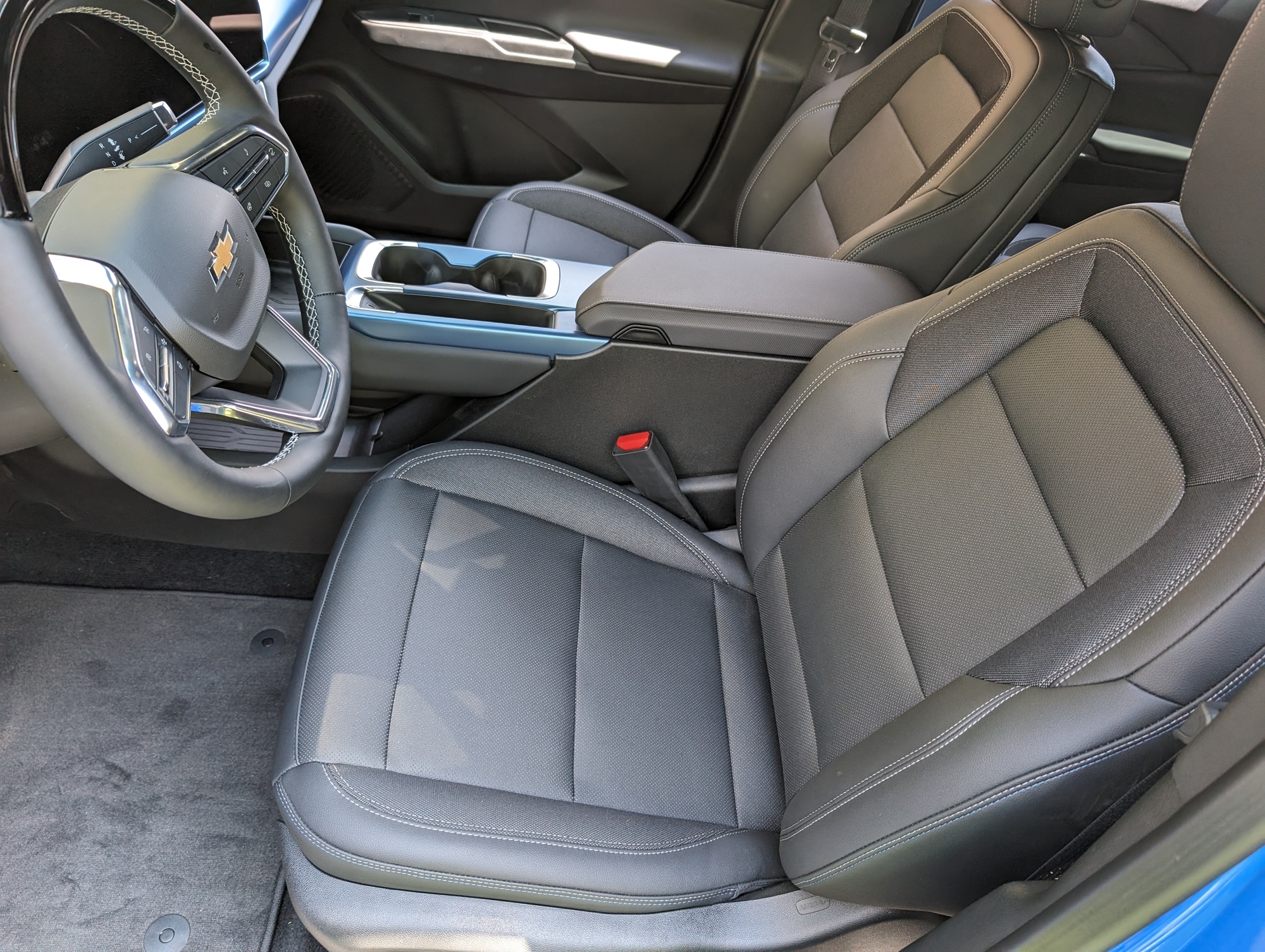
The rest of the Equinox interior is a really pleasant place to spend time with comfortable, if relatively flat seats that are covered in GM’s take on modern vinyl that they call Evotex. On the LT models, the interior is predominantly black or black and gray with blue plastic trim pieces on the doors, outboard circular vents, and center console. Those blue trim pieces do a great job of breaking up the typical monochrome of many vehicles. RS models get those trim pieces in a red/gray gradient finish.
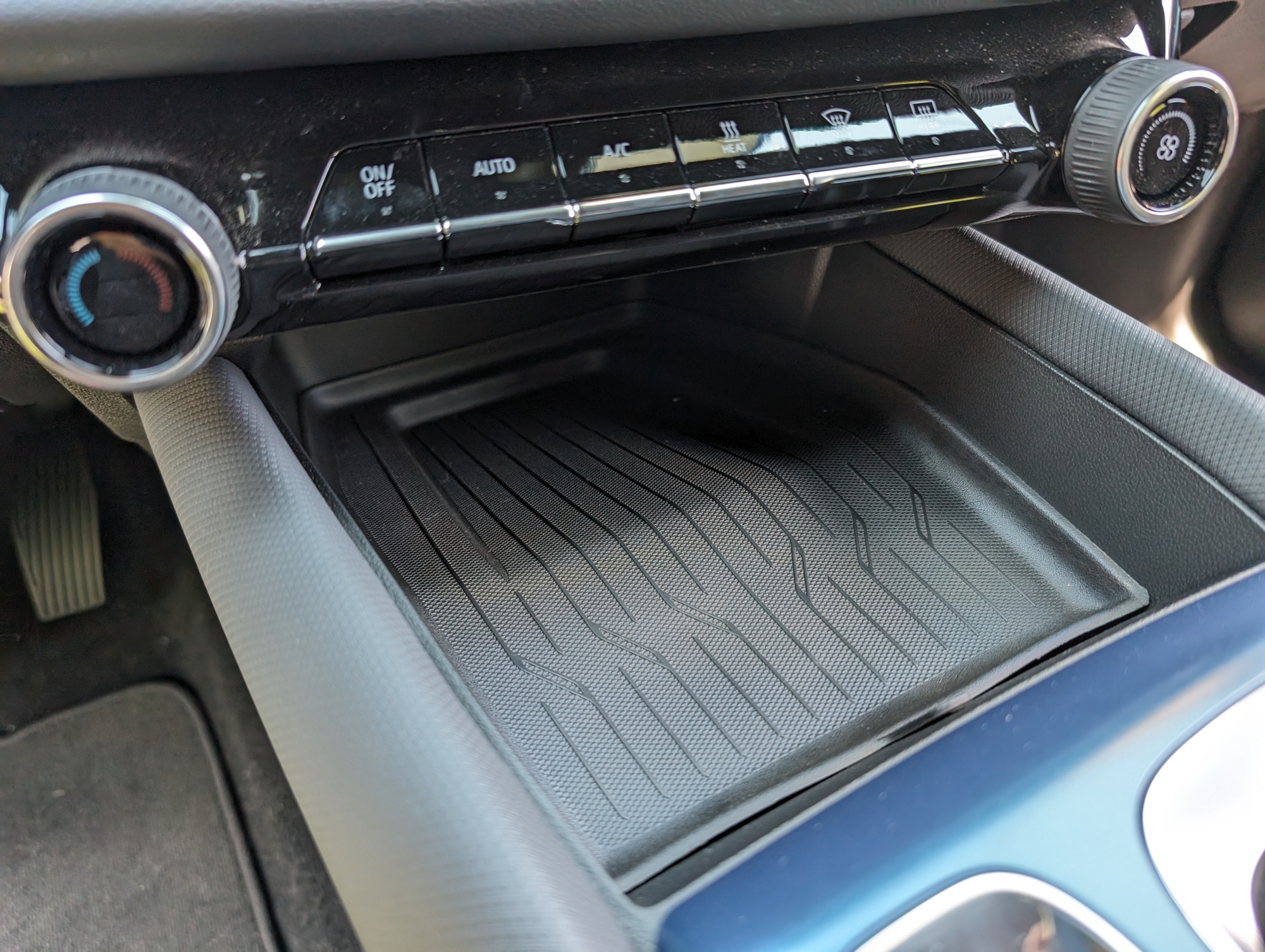
At the leading edge of the center console is a tray with a wireless charging pad and a pair of USB-C ports. Under the top surface of the console is another storage area for purses and other accouterments of daily life.
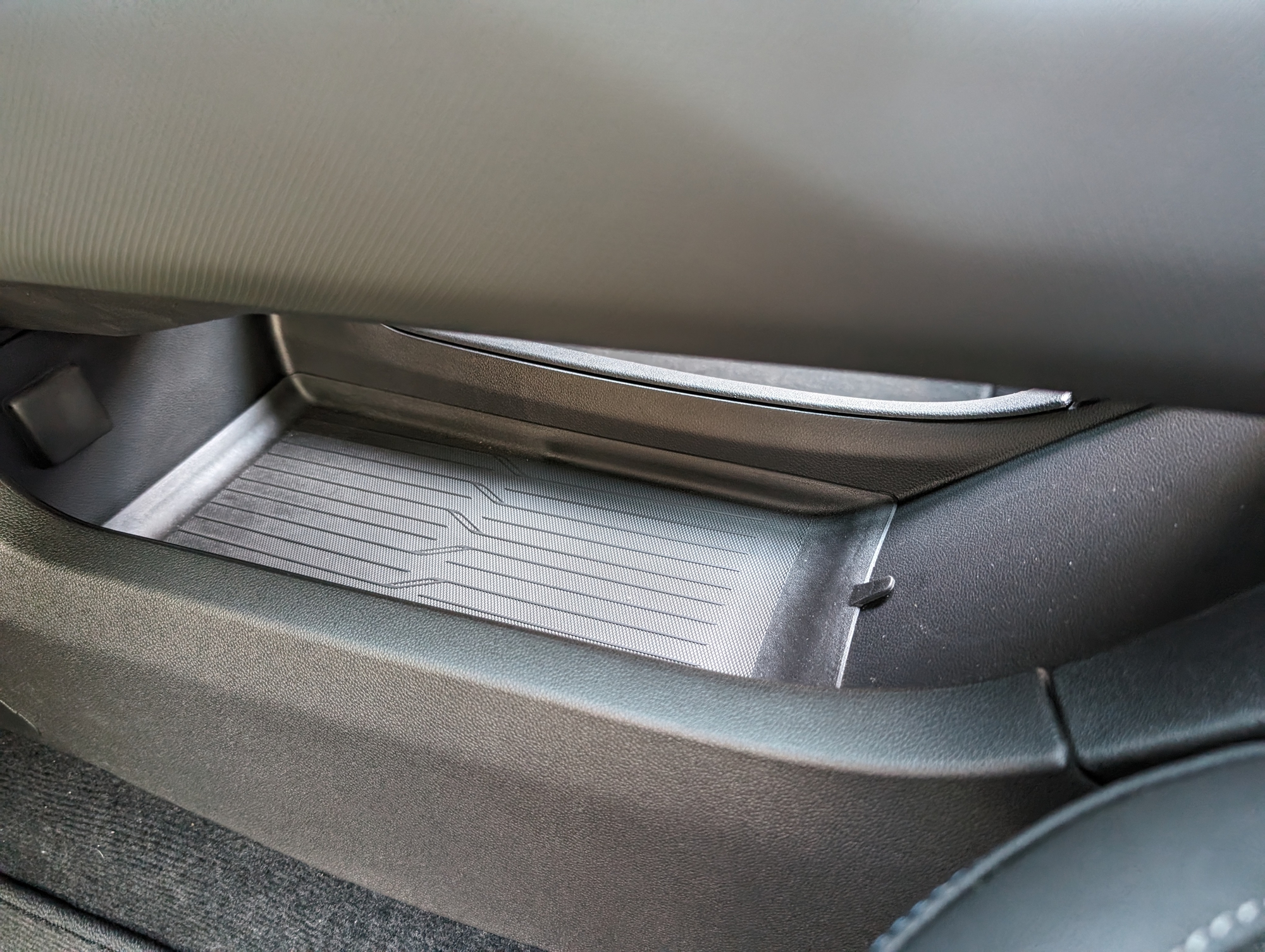
All Equinox EVs include a standard suite of driver assist features including enhanced automatic emergency braking that uses both front camera and radar for detection, surround view cameras, blindspot monitoring with cross traffic alert, lane keeping assist and more. The 3LT trim we drove was equipped with the $2,700 Active Safety Technology package 3 that includes Super Cruise hands-free driving assist. As on other GM vehicles, Super Cruise now supports over 400,000 miles of highways and secondary roads with that number being gradually increased via over-the-air map updates to more than 750,000 miles by the end of 2025. Super Cruise is still the best such system on the market and does a great job of holding the car in the lane while also being able to execute automatic lane changes when there is a slower vehicle ahead on a multi-lane road.

What’s It Like To Drive?
Ride quality, even on the mostly terrible roads that cover most of southeast Michigan, was surprisingly good. Going around corners, there was a decent amount of steering feedback despite the fact that this is clearly not a sports car. The not-a-sports-car vibe was reinforced by the acceleration which was initially quick off the line as expected from electric drive, but not really sustained when compared to many current EVs. The acceleration was nonetheless more than adequate.
We also got a chance to try out another LT model with eAWD. This setup had the same output as the eAWD Blazer I drove last December but the Equinox is at least 300-lbs lighter. In the Blazer, this drivetrain felt a bit underwhelming compared to the single-motor, rear-drive version. However, the Equinox came across as far more lively than either the Blazer or the front drive Equinox.
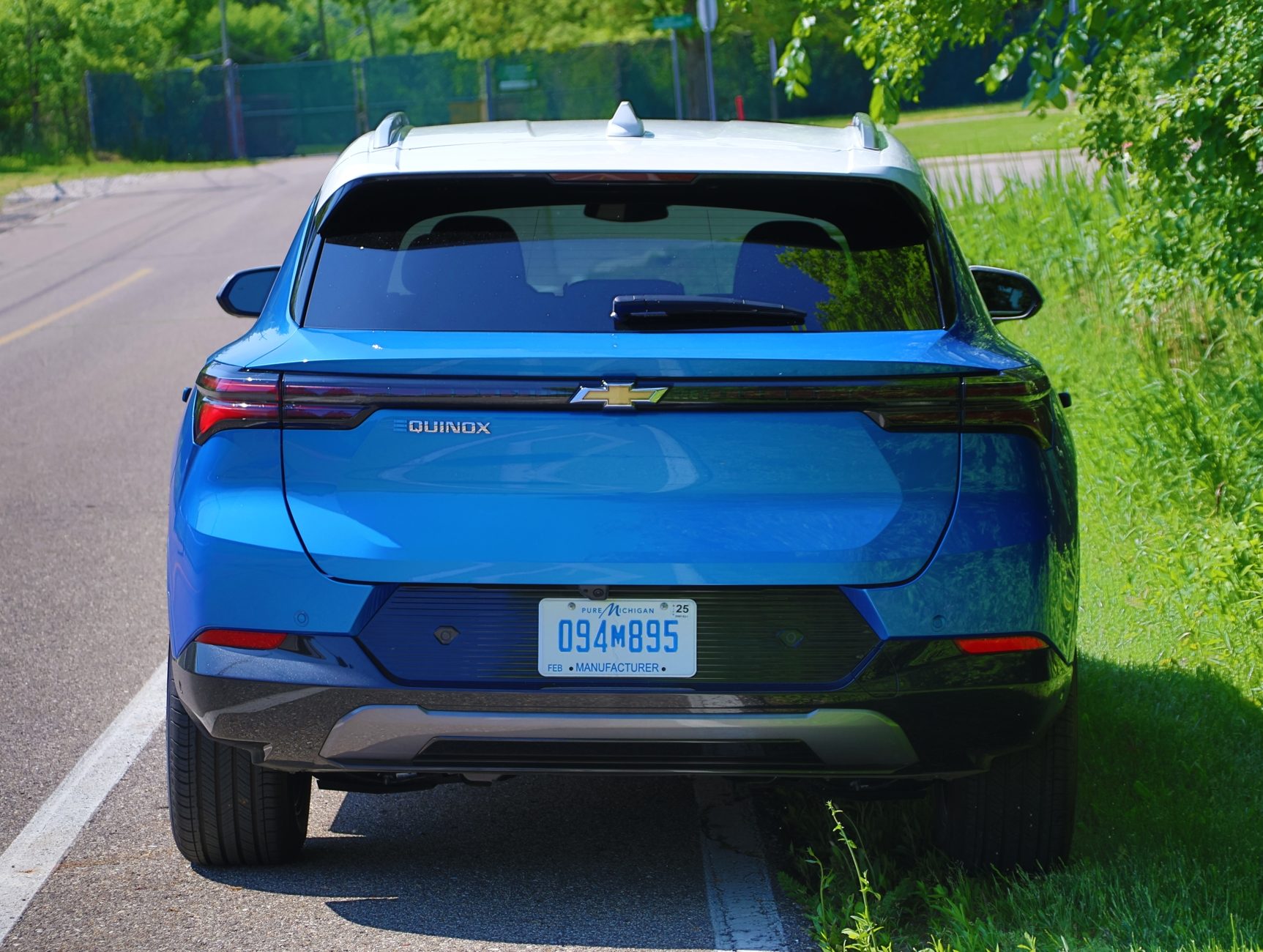
Over the past couple of years, it seemed pretty clear that General Motors considered its electric full-size trucks to be the most important products in its EV lineup, but that always struck me as wildly over-optimistic, especially with the initial versions of the trucks being planned to sell for over $100,000. GM went so far as to end production of the Chevy Bolt with the intention to retool the Orion, Michigan assembly to build these trucks in addition to the Detroit-Hamtramck assembly plant. But there are only so many people that can afford such expensive vehicles and there were already too many companies targeting the high-end of the EV market.

Meanwhile the Ramos Arizpe, Mexico plant would be producing gas and electric Blazers and Equinoxes as well as the Honda Prologue. When first announced, the Equinox was to have a starting price of $30,000 which would make it much more appealing to a broader audience that couldn’t afford six-figure pickups.

The Equinox EV Is Good
Later in 2024 or early 2025, there will be a $35,000 Equinox EV LS trim that will get down under $28,000 with the federal tax credits. At launch, the most affordable variant is the front-drive 2LT, which costs $43,295 including delivery charges. That makes the Equinox the most affordable EV in America with a range over 300 miles by a pretty wide margin and that LS will open up the lead even more. The other electric crossovers priced in the low $40K range are all shorter-range variants with ranges in the low to mid-200 miles and most aren’t eligible for the clean vehicle credit because they are built outside of North America.

Despite the fact that the Equinox EV isn’t really a compact crossover, it is an EV I would recommend to most people. With the tax credit bringing the price of a 2LT down to about $36,000, it’s actually quite competitively priced relative to gas or hybrid competitors making this midsize crossover both an excellent value and at least based on our first exposure, a really good vehicle to drive.


